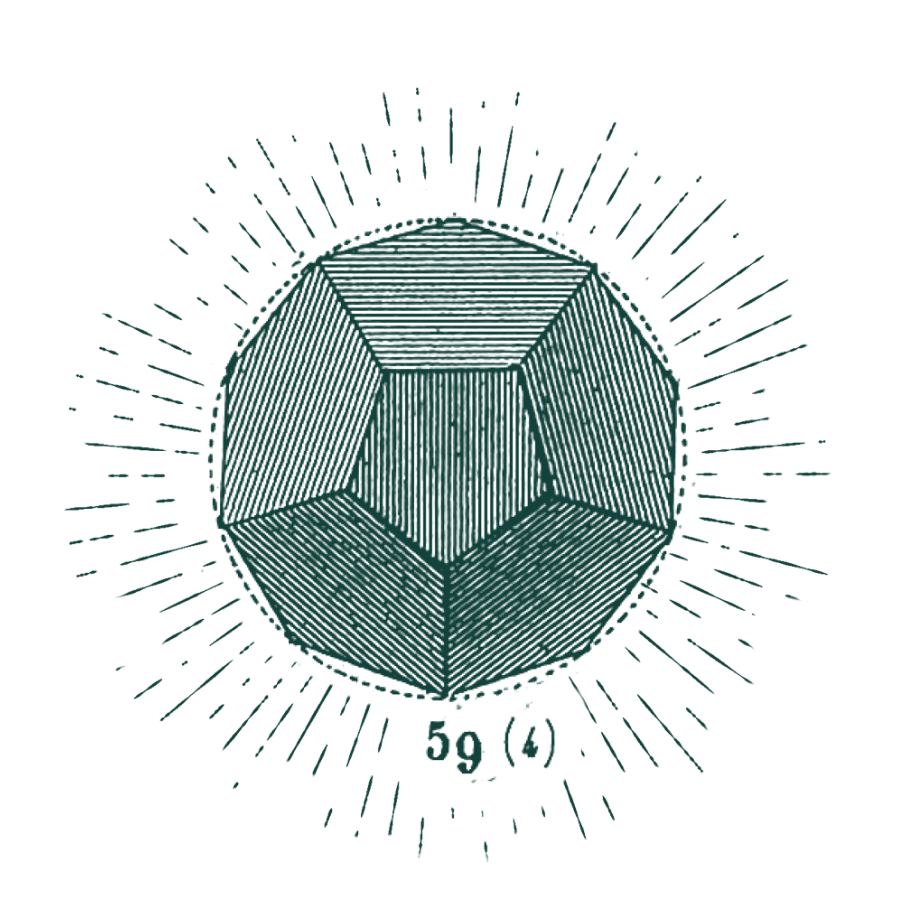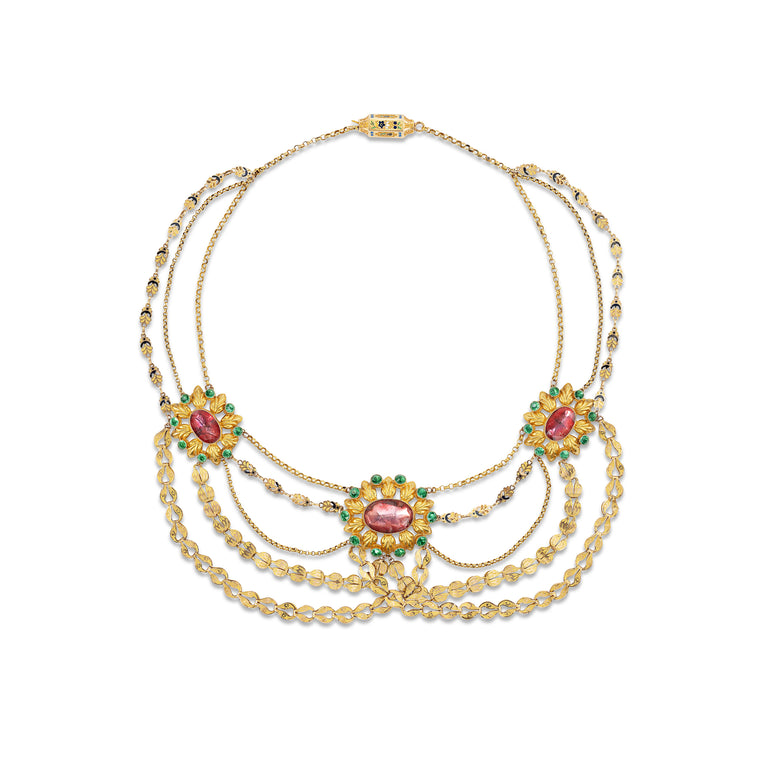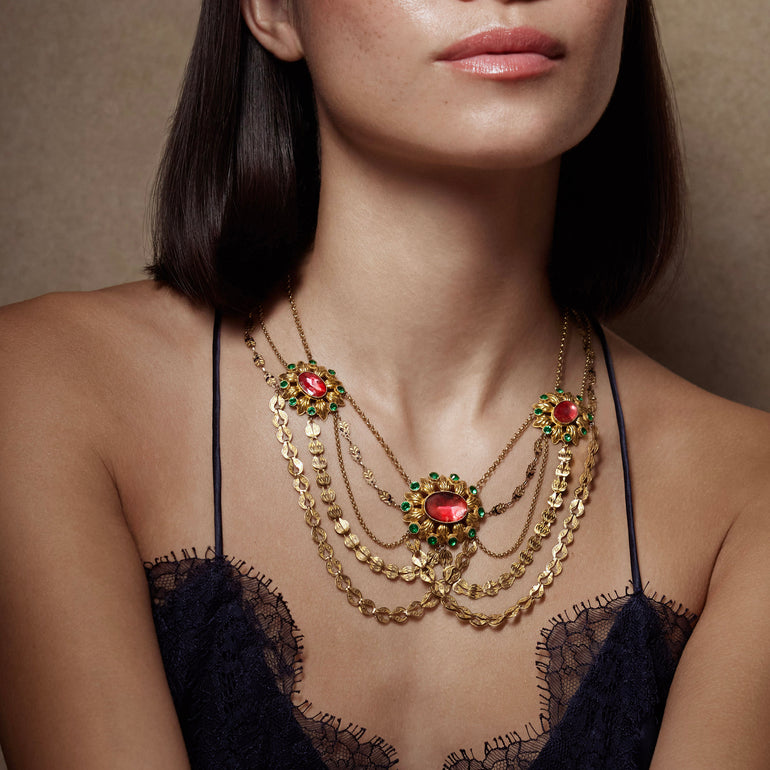Antique Empire Esclavage, ca 1830
Our Notes
The idea of an esclavage began in Europe prior to the Empire period in France. In its simplest definition, it translates to a festoon necklace that usually supports three decorative stations. This style reached a height in the first quarter of the 19th century with the rise of the Empire period in France. Fashion preferred Classical references that included dresses with clean silhouettes, and deep necklines.
Here, there is a series of 5 different gold chains that festoon neatly via 3 jeweled clusters made of foiled paste, and decorated with gold acanthus leaves. It has a beautiful, and very French barrel clasp that is enameled with decorative pansies, leaving no doubt that this was a sentimental necklace. Pansy is a play on the French verb, penser, meaning remember or think of me. Additionally the chain laden name of this silhouette, esclavage, references the notion of being bound by love.
France, ca 1830
Measurements, Materials & Care
Care
As our jewelry is worn, patinas will evolve, further personalizing them to each collector. Due to the nature of foiled jewelry, care should be taken in order to keep Larkspur & Hawk jewelry from becoming harmed. A few tips:
- Remove jewelry when applying lotions, soaps and perfume
- Remove jewelry before immersing hands in cleaning solvents or liquids
- Please note that oxidation may eventually wear off of rings, then return naturally
Shipping & Returns
Larkspur & Hawk offers shoppers to receive and live with their new pieces. If for any reason you are less than thrilled with a purchase, it may be returned for a full refund, unless marked as final sale. To qualify, merchandise must be postmarked within 14 days of the customer’s receipt and be in the items’ original and unused condition. All returns must include the original receipt. Larkspur & Hawk is not responsible for items lost during shipping.
Have questions, need help, or don’t see your color?



